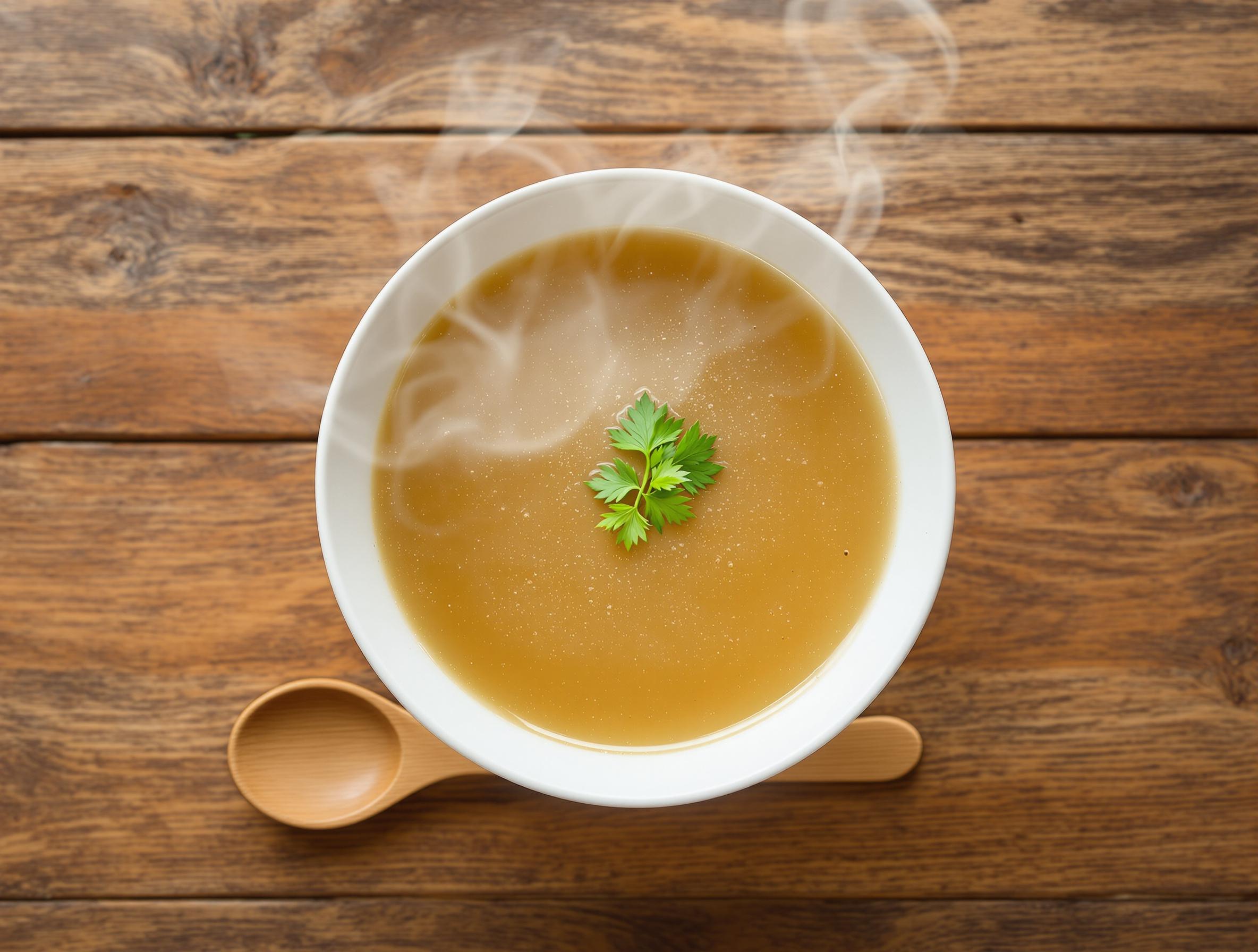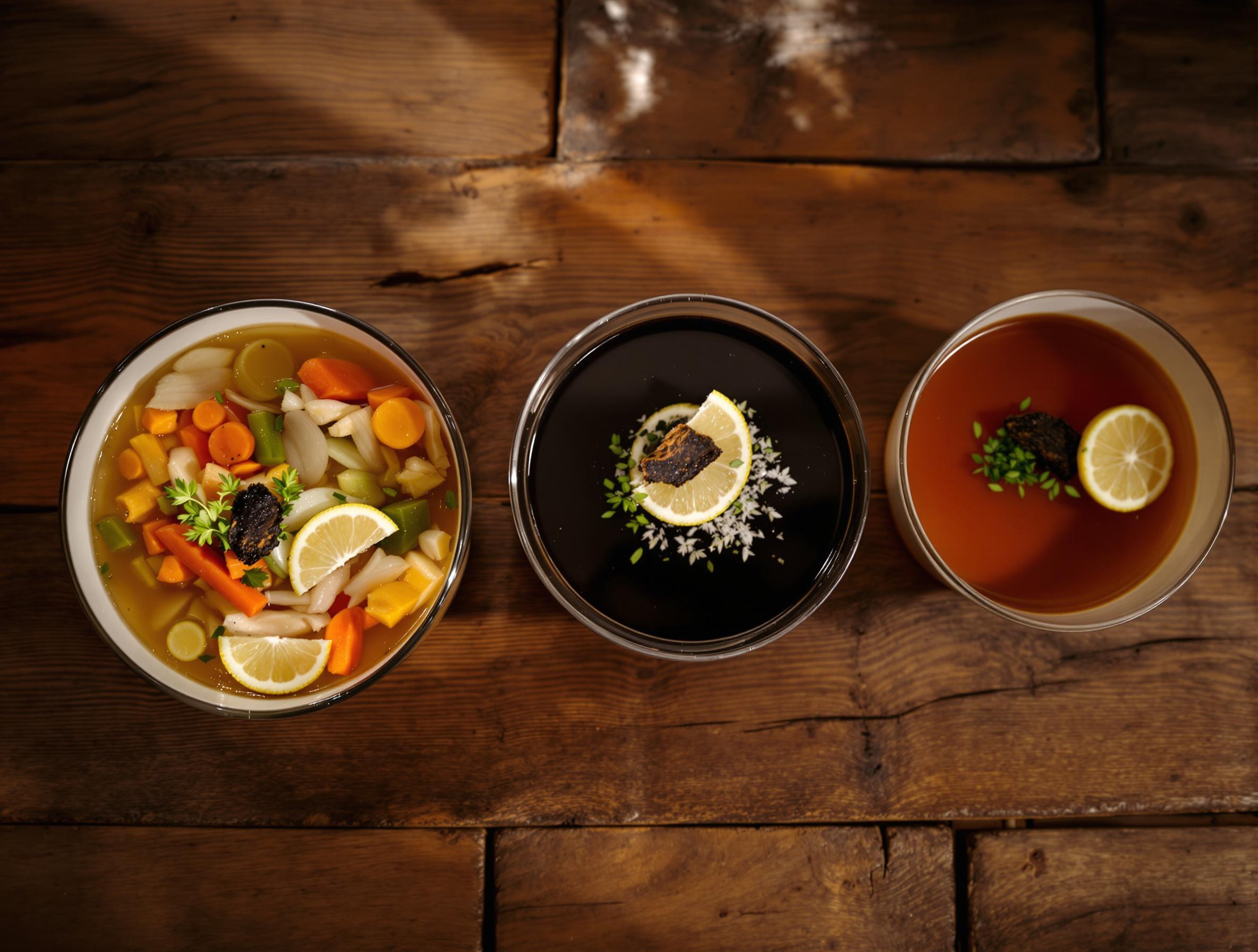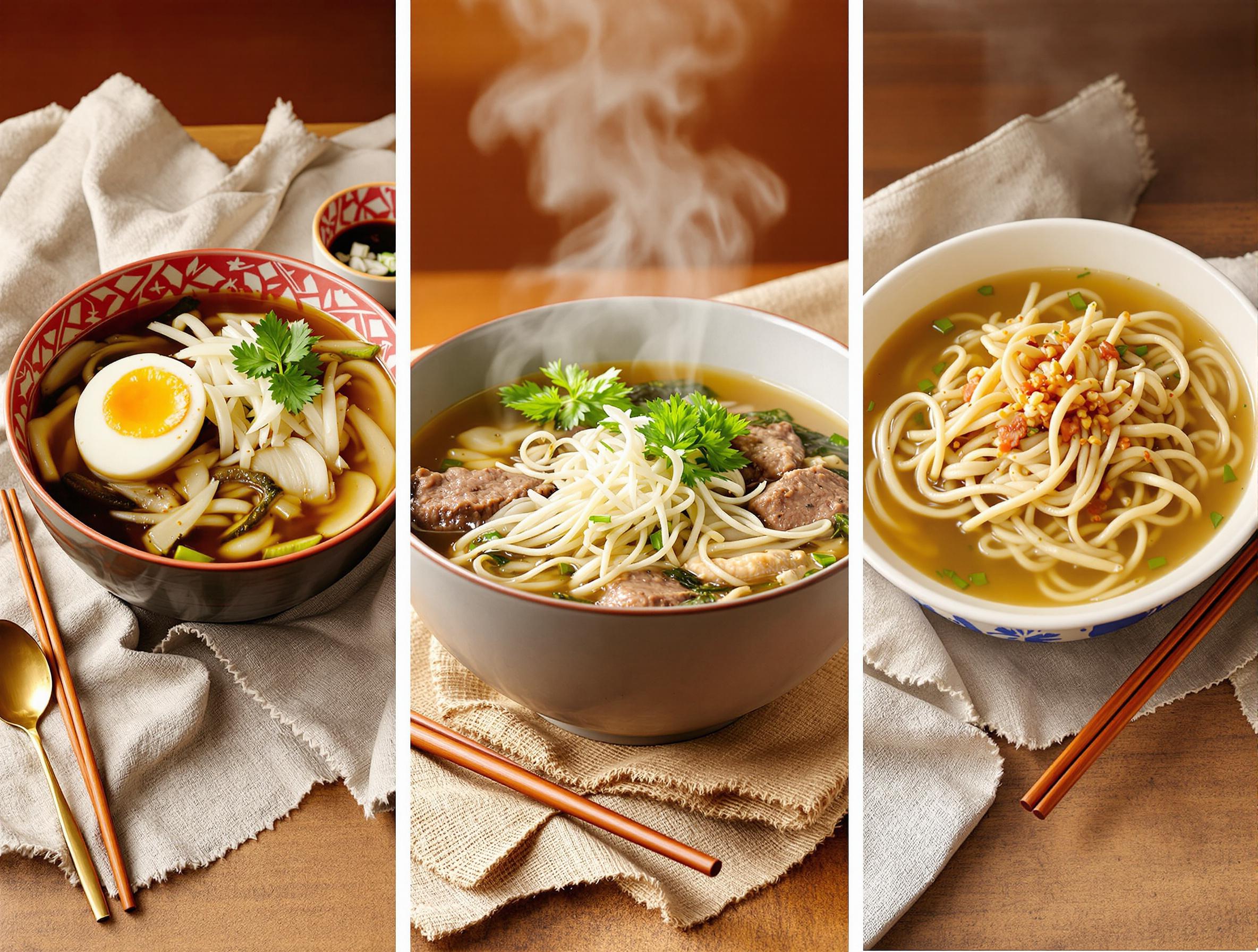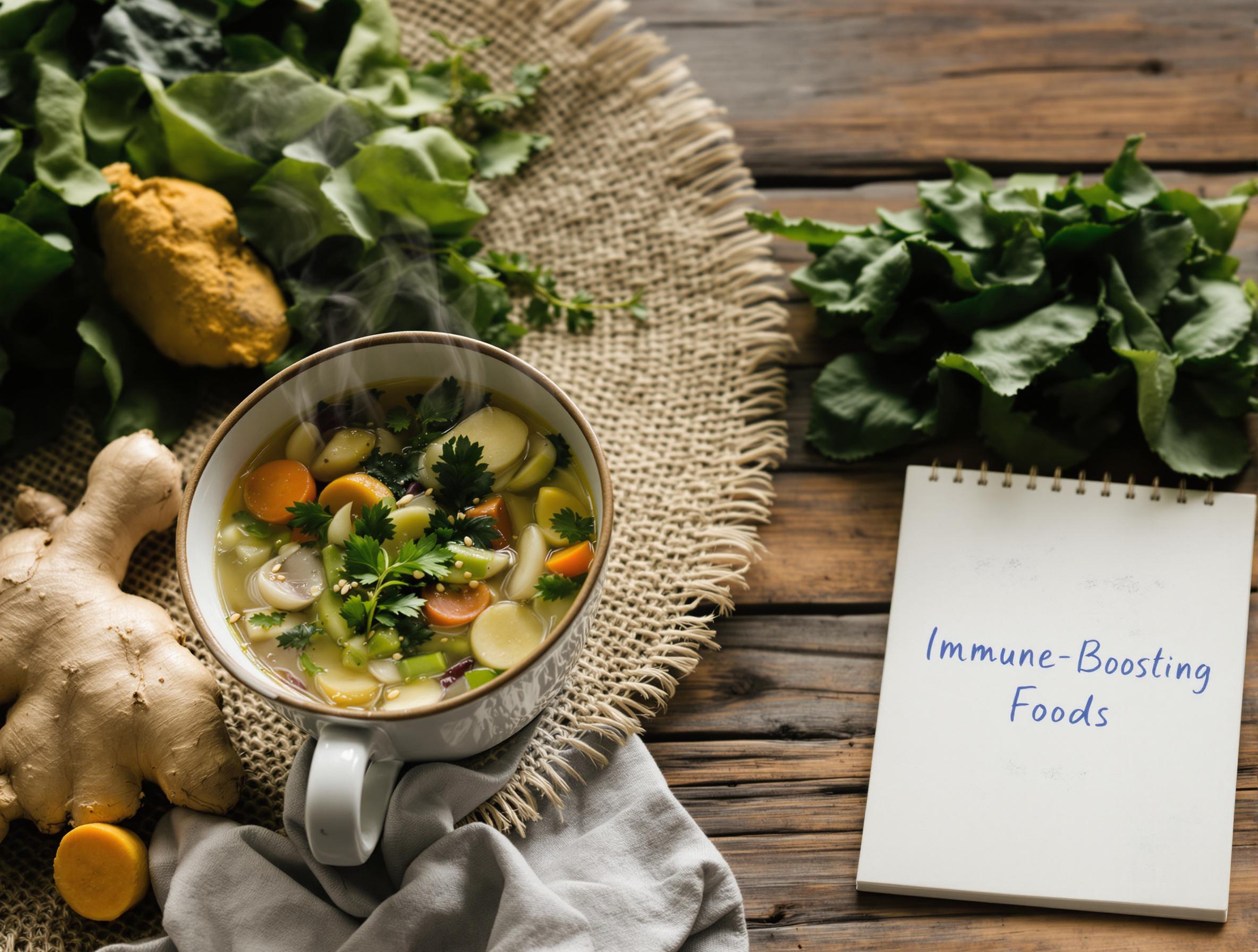Introduction
Clear soups are a staple in many cuisines around the world, offering a light and comforting option that is both versatile and delicious. Whether you’re looking to warm up on a cold day or seeking a nutritious meal, understanding the three main types of clear soups—broth, consommé, and bouillon—can help you explore new flavors and techniques in your cooking. These soups are not only delightful but also play a crucial role in various culinary traditions, making them an essential part of global cuisine.

Clear soups are defined by their clarity and simplicity, made without thickeners or cream, allowing the pure flavors of the ingredients to shine. These soups play a significant role in various culinary traditions, from Asian to European cuisines. For a deeper dive into the types of clear soups, you can explore detailed explanations on eHow.
What are Clear Soups?
Clear soups are light, broth-based soups that emphasize the natural flavors of their ingredients. Unlike creamy or thick soups, clear soups rely on a transparent liquid base, which can be made from meat, bones, vegetables, or a combination of these. The clarity of these soups makes them visually appealing and allows the individual flavors of the ingredients to stand out.
The process of making clear soups involves simmering ingredients in water to extract their flavors, resulting in a delicate and aromatic broth. This method is used in various cultures to create comforting and nourishing dishes. For a comprehensive guide on making clear soups at home, including step-by-step photos, check out Swasthi’s Recipes.
Clear soups are often appreciated for their simplicity and the purity of their taste. They are typically made by simmering ingredients such as vegetables, meat, or bones in water to extract their flavors. The resulting broth is then strained to remove any solids, leaving a clear liquid that is rich in flavor. This clarity is what sets clear soups apart from other types of soups, which may contain thickeners or cream.
The art of making clear soups lies in the balance of flavors and the careful selection of ingredients. The base of a clear soup can vary widely, from vegetable broths to meat-based stocks. Each type of clear soup has its unique characteristics and uses, making them versatile in various culinary applications.
The Three Main Types of Clear Soups

Broth
-
Definition: Broth is a flavorful liquid made by simmering meat, bones, vegetables, and herbs in water. It is lighter than stock and can be enjoyed on its own or used as a base for other dishes. Broth is often used as a foundation in many recipes, adding depth of flavor without overpowering other ingredients.
-
Common Ingredients: Chicken, beef, vegetables like carrots, celery, and onions. These ingredients are simmered together to create a flavorful liquid that can be used in various dishes. The choice of ingredients can significantly impact the final taste of the broth.
-
Cooking Process: Ingredients are simmered together to extract flavors, then strained to remove solids. This process ensures that the broth remains clear and free from any impurities. The simmering time can vary depending on the desired intensity of the flavor.
-
Examples: Chicken broth, beef broth, vegetable broth. These examples showcase the versatility of broth in different culinary applications. Chicken broth is a popular choice for its mild flavor, while beef broth offers a richer taste. Vegetable broth is an excellent option for vegetarians and vegans.
Broth is a versatile ingredient that can be used in a variety of dishes. It serves as a base for soups, stews, and sauces, adding a layer of flavor that enhances the overall taste of the dish. Broth can also be consumed on its own as a comforting and nourishing beverage, especially during cold weather.
Consommé
-
Definition: Consommé is a type of clear soup that is clarified to achieve exceptional clarity and intense flavor. It is often served as a starter or used as a base for other dishes. Consommé is known for its elegant presentation and refined taste, making it a popular choice in fine dining.
-
Preparation: Made by simmering stock with a mixture of ground meat, egg whites, and tomatoes, which help to clarify the liquid. The clarification process involves slowly simmering the stock with these ingredients, which attract and bind impurities, resulting in a clear liquid.
-
Examples: Beef consommé, chicken consommé, fish consommé. These examples highlight the different types of consommé that can be made using various stocks. Beef consommé is known for its rich flavor, while chicken consommé offers a lighter taste. Fish consommé is a delicate option that showcases the flavors of seafood.
Consommé is a sophisticated dish that requires skill and patience to prepare. The clarification process is crucial in achieving the desired clarity and intensity of flavor. Consommé is often served as a first course in multi-course meals, setting the tone for the dining experience.
Bouillon
-
Definition: Bouillon is similar to broth but is often more concentrated and can be used interchangeably with stock. It is made by simmering meat, bones, and vegetables. Bouillon is a versatile ingredient that can be used in various dishes to add flavor and depth.
-
Common Ingredients: Chicken, beef, vegetables, and sometimes additional seasonings. These ingredients are simmered together to create a flavorful liquid that can be used as a base for soups, stews, and sauces. The choice of ingredients can vary depending on the desired taste.
-
Examples: Chicken bouillon, beef bouillon, vegetable bouillon. These examples showcase the different types of bouillon that can be made using various ingredients. Chicken bouillon is a popular choice for its mild flavor, while beef bouillon offers a richer taste. Vegetable bouillon is an excellent option for vegetarians and vegans.
Bouillon is a convenient ingredient that can be used to enhance the flavor of various dishes. It is often available in the form of cubes or powder, making it easy to use in cooking. Bouillon can be added to soups, stews, and sauces to provide a foundation of flavor that complements other ingredients.
Cultural Variations of Clear Soups

Clear soups are enjoyed in various forms across different cultures. These variations showcase the adaptability of clear soups to different regional ingredients and cooking techniques. Some popular examples include:
-
Pho: A Vietnamese noodle soup made with a clear beef or chicken broth, rice noodles, and aromatic spices. Pho is a comforting and flavorful dish that is popular in Vietnamese cuisine. The combination of clear broth, noodles, and spices creates a harmonious blend of flavors that is both satisfying and nourishing.
-
Miso Soup: A Japanese soup made with dashi broth and miso paste, often containing tofu and seaweed. Miso soup is a staple in Japanese cuisine and is known for its umami flavor. The clear broth is enhanced by the addition of miso paste, which provides a rich and savory taste.
-
Chicken Noodle Soup: An American classic made with chicken broth, noodles, and vegetables. Chicken noodle soup is a comforting and nourishing dish that is popular in American cuisine. The combination of clear broth, noodles, and vegetables creates a hearty and satisfying meal.
These cultural variations of clear soups highlight the diversity and versatility of these dishes. Each variation offers a unique blend of flavors and ingredients that reflect the culinary traditions of its region.
Health Benefits of Clear Soups

Clear soups offer several health benefits, making them an excellent choice for those seeking a nourishing and comforting meal. Some of the key health benefits of clear soups include:
-
Hydration: The liquid base of clear soups helps keep you hydrated. Staying hydrated is essential for maintaining overall health and well-being. Clear soups provide a delicious and nourishing way to increase your fluid intake.
-
Digestion: Clear soups are easy to digest, making them suitable for those with digestive issues. The gentle simmering process used to make clear soups breaks down the ingredients, making them easier to digest and absorb.
-
Immune System Support: Clear soups are packed with nutrients from vegetables and meat, which can boost your immune system. The combination of vitamins, minerals, and antioxidants found in clear soups helps support immune function and overall health.
-
Nutrient-Rich: Clear soups are often made with a variety of vegetables and herbs, which provide essential vitamins and minerals. The simmering process helps extract these nutrients, making them more readily available for absorption.
-
Low in Calories: Clear soups are typically low in calories, making them an excellent choice for those looking to maintain a healthy weight. The combination of vegetables, herbs, and lean protein provides a satisfying and nourishing meal without excess calories.
-
Comforting and Soothing: Clear soups are often associated with comfort and warmth. They provide a soothing and nourishing meal that can help alleviate symptoms of illness or discomfort. The gentle heat and aromatic flavors of clear soups can be particularly comforting during cold weather or when feeling unwell.
How to Make Clear Soups at Home
Making clear soups at home is a straightforward process that allows you to customize the flavors and ingredients to your liking. Here are some tips to achieve the best results when making clear soups at home:
-
Start with Quality Ingredients: Use fresh vegetables, meat, and herbs for the best flavor. The quality of the ingredients significantly impacts the final taste of the soup. Choosing fresh and high-quality ingredients ensures a flavorful and nourishing broth.
-
Simmer Gently: Avoid boiling the soup, which can make the broth cloudy. Simmering the ingredients gently allows the flavors to meld together without becoming harsh or bitter. The gentle heat helps extract the flavors from the ingredients without breaking them down too quickly.
-
Strain Carefully: Use a fine-mesh strainer or cheesecloth to remove all solids. Straining the broth carefully ensures that it remains clear and free from any impurities. This step is crucial in achieving the desired clarity and presentation of the soup.
-
Experiment with Flavors: Don’t be afraid to experiment with different herbs, spices, and vegetables to create unique and flavorful clear soups. The versatility of clear soups allows for endless possibilities in terms of flavor combinations and ingredients.
-
Store Properly: Store clear soups in an airtight container in the refrigerator to maintain freshness and flavor. Proper storage helps preserve the quality and taste of the soup, ensuring that it remains delicious and nourishing.
Clear Soups in Professional Kitchens
In professional kitchens, clear soups are often elevated with advanced techniques to enhance their flavor and presentation. Chefs may use clarification methods and precise ingredient combinations to create elegant and refined dishes. The art of making clear soups in professional kitchens involves a deep understanding of culinary techniques and a keen attention to detail.
Professional chefs often use clear soups as a base for more complex dishes or as a standalone course that showcases their culinary skills. The presentation of clear soups in professional kitchens is often meticulous, with careful attention paid to the arrangement of garnishes and the overall aesthetic of the dish.
The use of high-quality ingredients and precise cooking techniques allows professional chefs to create clear soups that are not only delicious but also visually stunning. The clarity and purity of the broth are often highlighted through the use of elegant serving vessels and artistic garnishes.
Clear Soups for Special Occasions
Clear soups can be an excellent choice for special occasions, offering a light and delicate option that can be easily dressed up with garnishes and presentation techniques. The versatility of clear soups makes them suitable for various events, from intimate gatherings to large celebrations.
When serving clear soups for special occasions, consider the following tips to enhance their presentation and appeal:
-
Choose Elegant Serving Vessels: Use elegant bowls or cups to serve clear soups, highlighting their clarity and purity. The choice of serving vessel can significantly impact the overall presentation of the soup.
-
Add Artistic Garnishes: Garnish clear soups with fresh herbs, edible flowers, or other decorative elements to enhance their visual appeal. Artistic garnishes can add a touch of elegance and sophistication to the dish.
-
Pair with Complementary Dishes: Serve clear soups alongside complementary dishes that enhance their flavors and presentation. The combination of clear soup and other dishes can create a harmonious and cohesive dining experience.
-
Consider the Occasion: Tailor the presentation and flavors of clear soups to suit the occasion. For example, a light and delicate clear soup may be more appropriate for a formal event, while a heartier option may be better suited for a casual gathering.
FAQs About Clear Soups
-
What is the difference between broth, consommé, and bouillon?
- Broth is a light liquid made from simmering ingredients, while consommé is clarified for exceptional clarity. Bouillon is similar to broth but can be more concentrated. Each type of clear soup has its unique characteristics and uses in culinary applications.
-
How do you clarify a consommé?
- Clarification involves simmering stock with a mixture of ground meat, egg whites, and tomatoes, then straining to remove solids. This process helps achieve the desired clarity and intensity of flavor in consommé.
-
Can clear soups be made vegetarian or vegan?
- Yes, clear soups can be made with vegetable broth and plant-based ingredients. Vegetarian and vegan clear soups offer a delicious and nourishing option for those following a plant-based diet.
-
What are some common mistakes to avoid when making clear soups?
- Avoid boiling the soup, which can make it cloudy, and ensure proper straining to remove all solids. Boiling the soup can cause the ingredients to break down too quickly, resulting in a cloudy broth. Proper straining is essential in achieving the desired clarity and presentation of the soup.
-
How do you store and reheat clear soups?
- Store clear soups in an airtight container in the refrigerator and reheat gently on the stove. Proper storage helps maintain the freshness and flavor of the soup, while gentle reheating ensures that the broth remains clear and delicious.
Conclusion
Clear soups offer a world of flavor and versatility, from comforting broths to elegant consommés. Exploring the three main types—broth, consommé, and bouillon—can inspire you to try new recipes and techniques in your cooking. Whether you’re looking for a light meal or a sophisticated starter, clear soups are a delicious and nutritious option that can be enjoyed in various culinary applications.
This article provides a comprehensive overview of clear soups, their types, and how to make them, making it a valuable resource for anyone interested in expanding their culinary skills. The versatility and adaptability of clear soups make them an excellent choice for various occasions and dietary preferences.
For more insights on soups and cooking techniques, explore our comprehensive guides on how to make homemade soup more flavorful and the ultimate guide to slow cooker soup recipes. These resources offer additional tips and recipes to enhance your culinary journey.